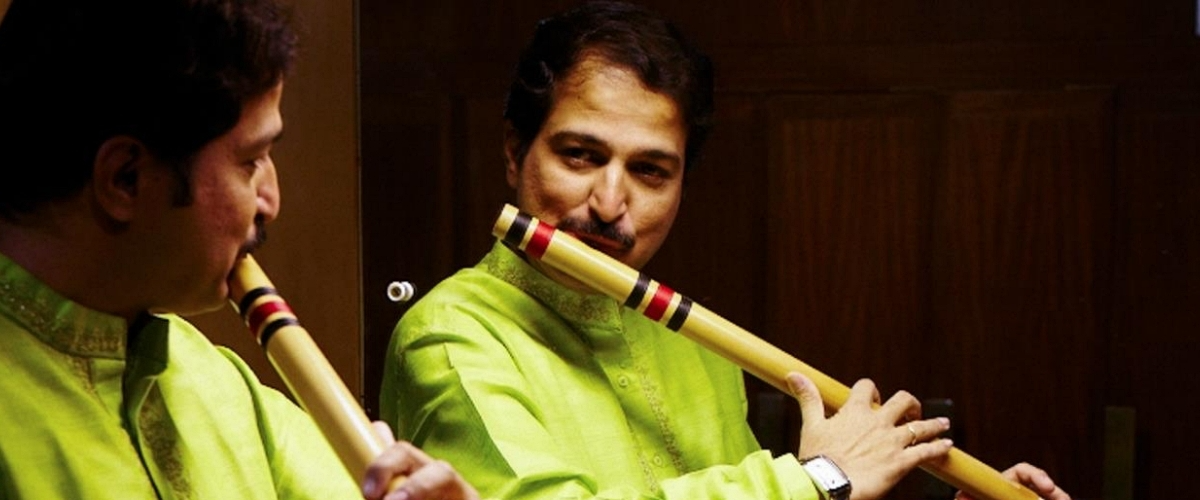

The bansuri master discusses therapeutic music, life with his guru Pandit Hariprasad Chaurasia, and the primal, divine nature of the flute.
—Part of Living Traditions: 21 articles for 21st-century Indian classical music
The bansuri is a tantalisingly simple instrument. Little more than a stick of bamboo with holes bored through, it cannot be retuned, and has no moving parts. Similar creations turn up across human history - in fact the modern bansuri differs little from the oldest musical instruments ever discovered, 40,000 year-old bone flutes found in a cave near the Danube.
Consequently, flutes also appear throughout the world’s mythology, often associated with gods, spirits, or animals. Greek legend holds that the instrument was fashioned by Pan, the god of shepherds and mountains, while the ancient Egyptians believed its pure tones channeled the voice of Isis, the goddess of healing and magic. Slavic myths venerate Snegurka, a snow maiden who melted after running into the sunlight to hear her lover’s flute.
German folk tales warn of invisible flautists who cause mischief by hiding in households and launching into song at inappropriate moments, and highland warriors from Papua New Guinea conduct elaborate flute ceremonies to communicate with the spirits of their ancestors. Several Native American traditions worship Kokopelli, a fertility god who visits earth in the form of an antlered, feathered, and humpbacked flute player.
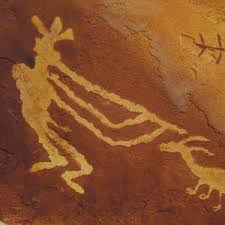
Kokopelli cave art
The Tucano people, indigenous to the Colombian Amazon, tell the tale of Uakti, a creature with holes in his body such that he would produce alluring melodies by running through the wind. He used his music to seduce the local women, eventually leading their menfolk to kill him, burn his body, and bury his ashes in the soil. The Tucano believe Uakti’s essence lives on in the palm trees from which they build their own flutes.
India is of course no exception to these mythic trends. Ancient manuscripts describe how the forest would ‘sing by itself’ when enchanted insects bored holes through bamboo stems, and Lord Krishna, the Hindu god of love and tenderness, is rarely depicted without a bansuri in hand.
Yet another mischievous flute deity, Krishna is famously reputed have used his prowess on the instrument to seduce the Gopi milkmaids, enticing them to leave their beds in the middle of the night to seek out the physical source of his irresistible melodies. The lyrics of thumris - semi-classical poetic songs - often reference such scenes (“Enough! Now stop playing on your flute, dark lover - this Braja girl's heart is aflutter...”).
But despite its extraordinarily rich historical footprint, the flute is a comparatively recent addition to Indian classical. Long seen as a mere folk instrument, it found little space on the Hindustani stage until the 1950s, when Pandit Pannalal Ghosh pioneered an exciting new style replete with melodic unpredictability and florid ornaments.
Ghosh grew up in a family of singers and sitarists. In his youth he balanced music with archery, stick fighting, and anti-colonial activism, and even became the All Bengal boxing champion at one stage. He would later credit this athletic training with strengthening his lungs, allowing him to play flutes of unprecedented size and convincingly capture the gayaki ang (‘singing style’) of khayal vocal music.
The great pioneer died suddenly in 1960, but bansuri progress did not abate. As a child, Pandit Hariprasad Chaurasia had to learn it in secret (his father wanted him to become a wrestler), but he remained undeterred, going on to revolutionise the instrument’s vocabulary over the latter half of the 20th century. His students continue to innovate in the 21st - notably his senior disciple Pandit Rupak Kulkarni.
Rupak came to London in late 2018 for Darbar Festival, enrapturing the Barbican Centre crowd in a superb performance with flamboyant young tabla star Ojas Adhiya. His versatile style blends long sustained notes with pops, slaps, and swooping inflections, and his improvisations are imbued with humour as well as razor-sharp mathematical calculation (all on display in the clip below - Hindustani music doesn't get much more fun than this!). Darbar spoke to him twice around the time of the festival - Indrani Datta did so for a video interview, and I caught up with him at length via email. Below are some highlights from our discussions.
You were trained in music from a young age, studying tabla and bansuri with your father Pandit Malhar Rao Kulkarni before moving on to Pandit Hariprasad Chaurasia...
I was fortunate to have two gurus when growing up. To find just one great guru is difficult, and I was very lucky. My father was an excellent flautist, and would teach hundreds of students at the family home. So music was always in my ears, and soon went to my soul. He started my life in this music, but after learning the basics he took me to Hari-ji. You need a big heart to take your own son to another flautist.
As a child I always wanted to learn and give my best. Even now, when I hear any musician - whether a beginner or a Pandit - I will listen carefully, and take out what I can do to improve my own improvisation. There is something to learn from everyone. Doing this never feels like work to me!
Chaurasia says that his students are more important to his legacy than his recordings (“I dare to dream that through my students my flute will be left behind as the memory of Krishna...”). What did a typical day look like under his discipleship? What memories stand out the most?
Guru-ji has always been very dedicated when it comes to teaching. He just loves to hold the flute 24 hours a day, and no matter how tired or fatigued he may be he will always teach with enthusiasm. He offered so much encouragement to us youngsters, never scolding too harshly. I used to go to his home on Sunday mornings, learning until lunchtime and eating with him afterwards - this was a privilege only for the senior disciple. So I could sense he had some special feeling for me.
How do you place your own style within the lineage of Hari-ji and other great masters from the past?
I see bansuri playing as having two branches. There is the branch of Pannalal Ghosh, who first brought the flute into the classical music scene with many innovations. And the other is the style of my guru Hariprasad Chaurasia. He created such amazing patterns, and the whole world is now following his playing.
Both are from the Maihar gharana [a musical lineage centred around sarod maestro Ustad Allauddin Khan], but their playing styles are very different. In the style of my guru we tend to play the alap in dhrupad style [meaning that rhythmless introductions are longer, slower, and more structured].
Guru-ji would teach us to play full alap-jor-jhalla too [a long unaccompanied section where the pulse is gradually introduced]. To play all this on the flute for a concert takes much practice, but with your heartbeat it can come under control.
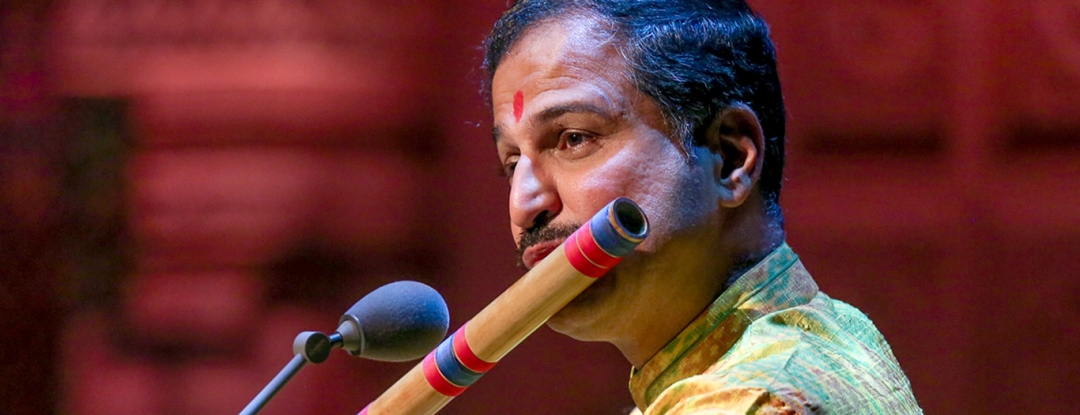
"Music was always in my ears, and soon went to my soul..." Photo: Rehmat Rayatt
Eventually - and with your guru-ji’s blessing - you looked beyond the usual bansuri repertoire. What led to this phase of expansion?
When I was about 19, there was a big music conference in Kolkata. [Vocal pioneer] Kishori Amonkar was on before me, and my guru-ji after. I thought I played okay, but in the papers afterwards one critic wrote, “Rupak is skillful, but must develop his own style”. So from then, I decided that I should do such things that would make me different from the group.
I looked at the patterns of sarod, and started to interpret the work of [santoor pioneer] Shivkumar Sharma. Shiv-ji’s layakari [rhythmic interplay] is so unique - it looks simple but is very difficult to properly learn. And apart from sarod and santoor I have used ideas from sitar and sarangi, all to find my own unique perspective. And I think the people are learning to appreciate it more now.
Your guru-ji participated in film and fusion projects as well. What does he think of your work in these areas? And he is over 80 years old now - do you feel a pressure to uphold his legacy?
For so many years he strictly told me ‘don’t play in the film industry’, so I didn’t for almost 20 years. Now I see why he said this for so long - he wanted my classical base to get strong first. But today he is quite happy with me doing this type of work.
After my marriage then guru-ji's wife told my wife to take special care of me, as they were counting on me to take his legacy further. He says he is pleased with my progress up until now, and still helps to guide my life outside music too.
You’ve created your own ragas, including Sonakshi and Rang Malhar. What led you to come up with these new forms? How did you go about it?
I created Sonakshi so I could experience a raga which was suitable for any time of day. I believe we have different mindsets depending on the hour - in the morning our mood is spiritual and fresh, and in the evening it is has more longing and perhaps tiredness too. So to mix these emotions up I took a few phrases from Lalit and Bhairav [dawn ragas] and blended them with those from Marwa [a sunset raga].
Rang Malhar happened by chance. It was the rainy season, and I was playing in a monsoon festival. I was the last performer, and by the time my turn came then all types of Malhar family ragas [traditionally associated with the rains] had been played already. I thought I should come up with a different one - and Rang Malhar came out. It is quite a unique combination, mixing Shuddh Sarang and Miyan ki Malhar.
And I lately composed another - Raag Annapoorna - dedicated to Maa Annapurna Devi, my grand guru [teacher of my teacher]. Again, it is a combination of morning and evening ragas, so can be played at either of these hours. Soon I will be uploading it to social media.
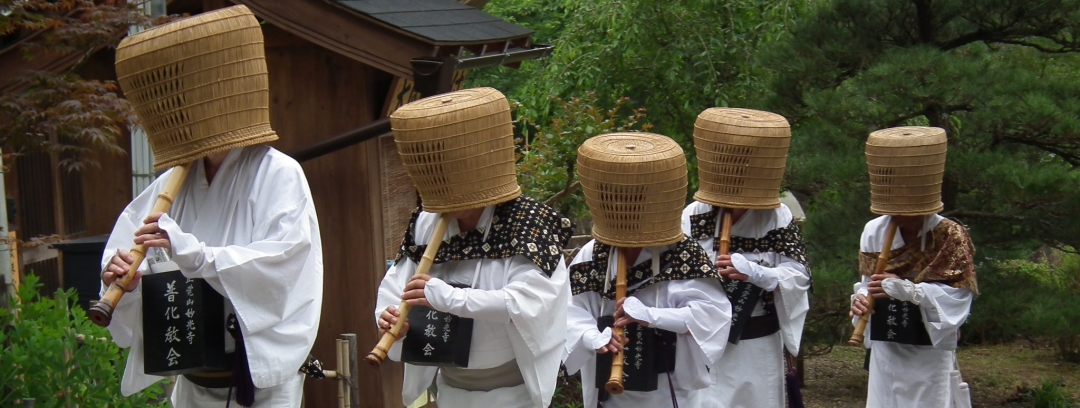
Japanese komuso monks play the shakuhachi in pursuit of ego loss
The flute is used as a meditation aid across the world. In 18th century Japan, the komuso (‘monks of nothingness’) played the shakuhachi bamboo flute as they wandered the countryside, hiding their heads in woven baskets to symbolise the loss of individual ego. How do you use the flute for meditation?
The bansuri is just a simple piece of bamboo. But it brings many benefits, not only for your ears but for your entire body and soul. Pranayama [breathing meditation] happens automatically, so to play is to soothe the mind. The flute needs no maintenance - the only thing you need is to be in tune internally.
You have a strong interest in therapeutic music - past album titles include Music Therapy for Migraine, Music for Sound Sleep, and De-Stress Revive. Could you elaborate a little on music’s healing power?
Therapeutic music is a need of its hour. Psychosomatic stress is a major cause of many different ailments, and our music can reduce it, although it ultimately it depends on who is playing it and how it is being listened to.
The structure of a concert is like our body clock. We get up slowly, like alap, and gradually our speed will increase. Then we ‘come home’, like finishing a raga, and afterwards we relax, perhaps like playing a thumri [poetic song] or dhun [folk tune]. So the music can help us be within ourselves.
I believe our mind and body are influenced by the planetary situations too. Each planet has its own mantras and colours, and every colour has its own associated swara [note]. I studied the relationships between all these properties, and came up with music based on them, such as my album Chakraview.
You’ve invented several new flutes, including the adbhut bansuri (‘flute of wonder’), a 1.2-metre-long bass variant. What led to its creation? And how has it opened up your playing?
To play a large flute, one usually needs broad fingers. My fingers are quite short, and I was having difficulties with this. So I guided my student Nilesh, a professional flute designer, to create a bass bansuri which could be played with normal fingering, without too much stretching.
It took a lot of experiments, but he eventually made it by working non-stop for 22 hours. I often use it in my alap playing to reach the full mandra saptak [lower octave]. Although it can be played in any style of music.
One could make even larger flutes, exceeding 60 inches [1.5 metres], but I don't think this is necessary for me. A flute should sound like a flute. I have created others too, made from glass and acrylic. They are just for fun - to attract the younger generation towards Indian classical music.
[See Rupak showcasing his flute collection in this short clip]
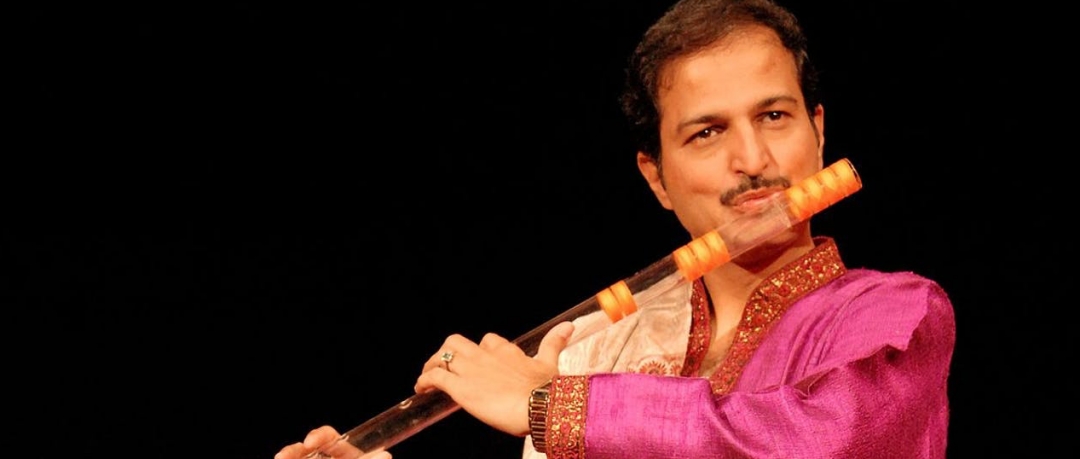
Pandit Kulkarni and his experimental glass bansuri. Photo: Darbar
Like your guru-ji, you put a lot of effort into teaching. How does your instruction differ from his? And more broadly, do you feel learning styles are changing much in the modern world?
I learn a lot from teaching others. It’s food for my brain, and I can use it to improve my own playing. It helps that today’s young learners are very curious, and always want to get to the root of the subject. But students must always stay grounded.
I never dared to question guru-ji about why he was teaching me this or that - in fact I still don’t! But this generation is fearless, and don’t shy away from asking questions like this. So I must take this positively and try to satisfy their queries. I feel that most of the time I succeed in finding answers.
I advise my students to keep on practicing - and also to keep on thinking. The sound of a raga can occupy you for all 24 hours, and you must learn to visualise them in a sense too. Then you can produce the raga properly for a two-hour performance. If you keep on thinking then you’re bound to get the best results.
Do you feel modern students should look outside Indian classical music for inspiration?
Yes - it is very important to do this. To capture the younger generation we need to go in their direction with classical music. But it must be done in the proper way. I also believe that nowadays you should be well versed in Western classical music too, such as knowing some of the chords and scales. We should keep our eyes and mind open, and try and play at least 10-15% of Western music alongside ours.
There don’t seem to be many top-level female bansuri players yet other than the Chatterjee sisters (who were also trained by your guru-ji). What advice would you give to girls who are considering taking up the bansuri today? Are things progressing quickly enough for women in Indian music?
Things are moving forward quite quickly now, and more girls are taking up the flute as a profession. Music is equal for all. It doesn't differentiate between male and female, so those who do their riyaz [immersive practice] with patience and dedication are bound to go places. I feel India is a good place for female artists now, with more opportunities to perform and explore the music.
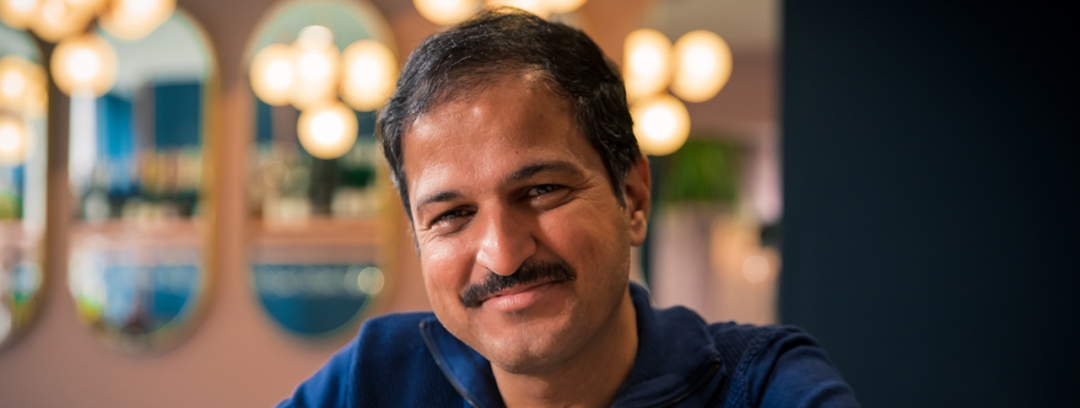
"I learn a lot from teaching others. It’s food for my brain..." Photo: Darbar
How do imperfections in your performance make you feel?
Hindustani music is 99% improvised, so it cannot be perfect. You may be able to perfect some phrases through rigorous riyaz, but not an entire performance. The audience may not notice the glitches, but the musician certainly does. I am never satisfied with my concerts, and always try to play better in the next one.
Guru-ji never cites my mistakes directly, but I can always make out from his face whether he is happy or not! And in any case I always take criticism in a positive way - it is for my betterment, so if I listen to it then I will be the one who benefits.
Compared to ten years ago, have you changed much? As a musician and as a human being...
I think I’m calmer, because I’m starting to age more. So I wil naturally improvise in a way that suits this. But the most important things do not change - I always want to satisfy the Pandits, the connoisseurs, and the common man alike. And still every day I feel I have to improve, I have to grow.
What does musical satisfaction mean to you?
Satisfaction for me is becoming one with Sa [the root note, ever-present in Indian music’s background tanpura drone]. Also, I always love to play more concerts, and to guide youngsters in how to create a healthy atmosphere for this music’s future.
• George Howlett is a London-based musician and writer, specialising in jazz, rhythm, Indian classical, and global improvised music. Article also features material from Indrani Datta’s excellent conversation with Rupak - watch it here.
Darbar believes in the power of Indian classical music to stir, thrill, and inspire. Explore our YouTube channel, or subscribe to the Darbar Concert Hall to watch extended festival performances, talk and documentaries in pristine HD and UHD quality.
The trailblazing choreographer discusses how classicism can be experimental in the context of curating for Darbar. By...
Read More 
Thumri is North India's most popular light-classical song form, developed during the 19th century at the court of...
Read More 
The Hindustani slide guitar pioneer discusses instrument creation and the hidden harmony in ragas. By George Howlett...
Read More 
The beginner's guide to Indian classical music. Whether you’re completely new to raga music or just need a refresher, we’ve put together this brief overview of all things raga music to help you feel at ease when visiting one of our concerts or watch our videos on our YouTube or our Darbar Concert Hall.
Keep up to date with the latest news, events, music and musings across our social channels
For hundreds more clips and shorts, vist our YT page here 